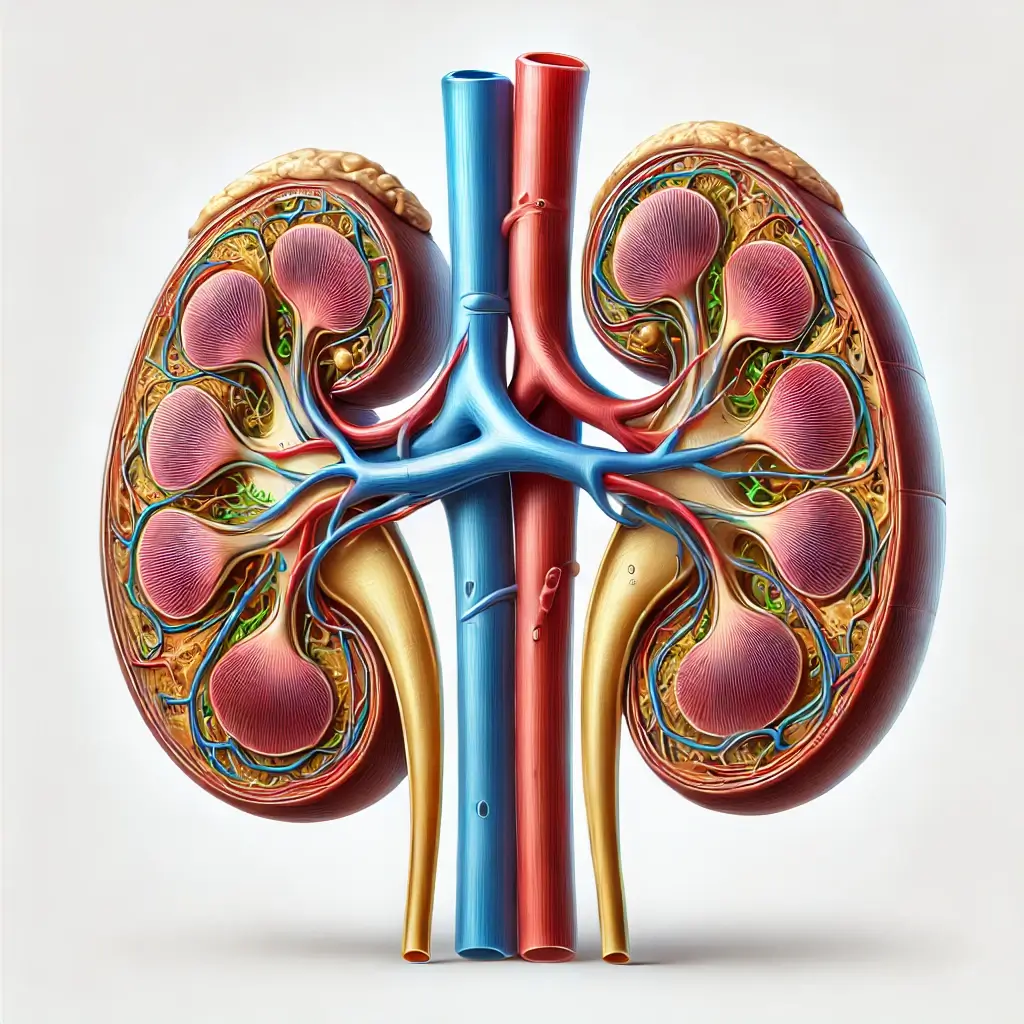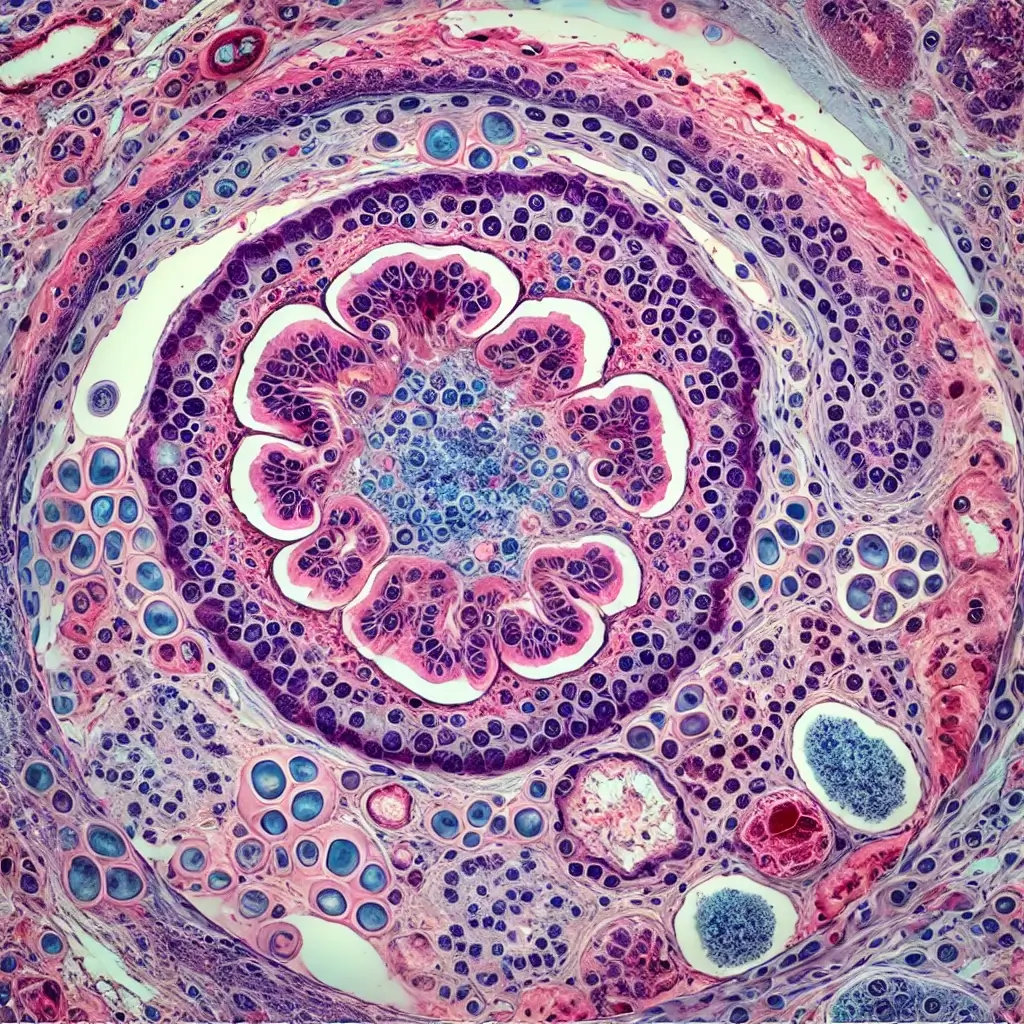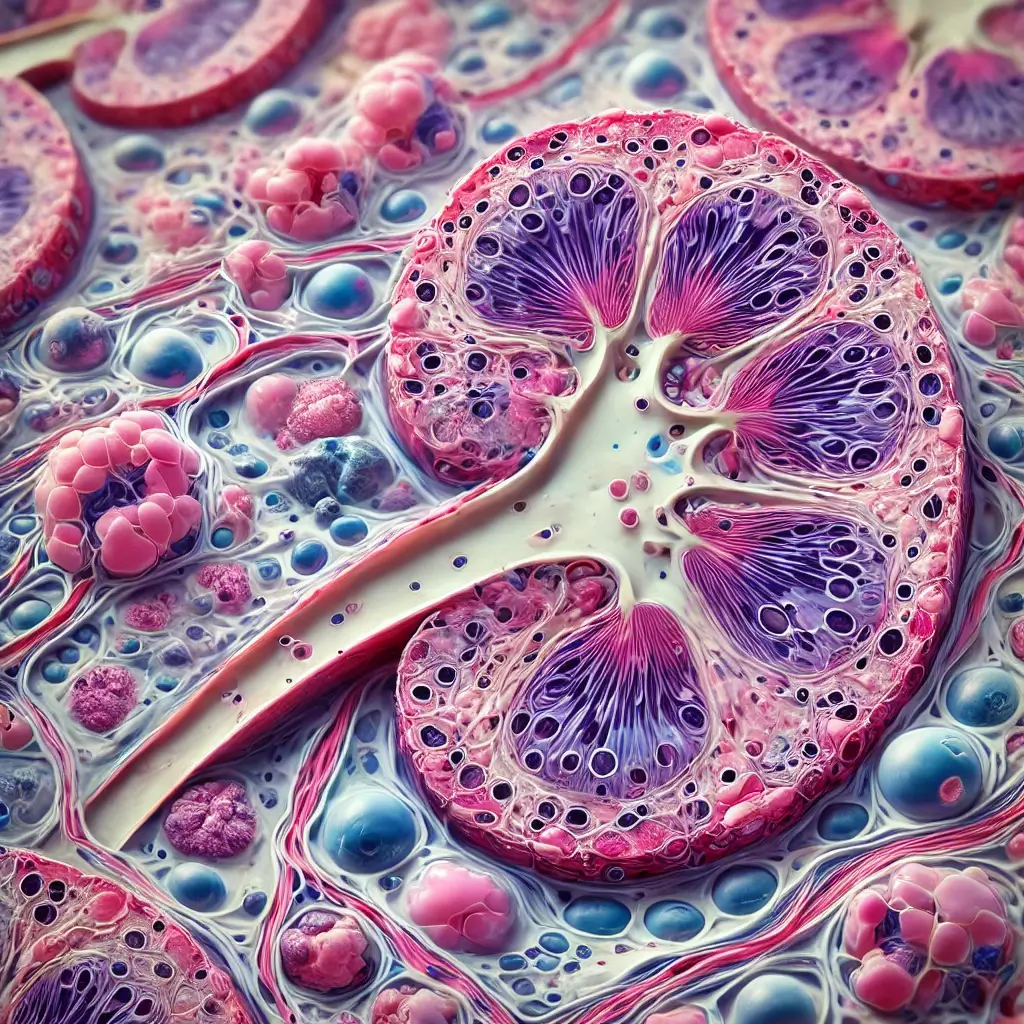Book Appointment Now
Understanding Wilms Tumor

Wilms Tumor Guide
Introduction
Introduction
Wilms tumor, or nephroblastoma, is a rare kidney cancer that primarily affects children, most commonly those under the age of 5. It is named after Dr. Max Wilms, the German surgeon who first described the condition. Advances in treatment have significantly improved survival rates, making Wilms tumor one of the most treatable childhood cancers when detected early. Awareness of its symptoms and understanding treatment options are crucial for timely intervention and recovery.
Statistics
In the United States, approximately 500 new cases of Wilms tumor are diagnosed annually. It accounts for about 5% of all childhood cancers. The five-year survival rate exceeds 90% for children with localized Wilms tumor, thanks to improvements in multimodal treatment approaches involving surgery, chemotherapy and radiation.
Medical Illustrations
Histological section of Wilms tumor (nephroblastoma) under a microscope:

Microscopic view of Wilms tumor (nephroblastoma):

Risk Factors and Prevention
a. Known Risk Factors
While the exact cause of Wilms tumor is unknown, certain factors can increase risk:
- Genetic Syndromes: Conditions such as WAGR syndrome, Denys-Drash syndrome and Beckwith-Wiedemann syndrome are associated with a higher risk.
- Family History: A family history of Wilms tumor can elevate the risk, though most cases are sporadic.
- Congenital Anomalies: Abnormalities like hemihypertrophy (one side of the body being larger than the other) or genitourinary anomalies increase susceptibility.
- Age and Gender: The condition is most common in children aged 3 to 4 and slightly more prevalent in girls than boys.
b. Prevention Wilms Tumor
There are no established prevention methods for Wilms tumor due to its genetic and developmental origins. However, regular medical checkups for children with known risk factors or genetic syndromes can aid in early detection.
Screening
Symptoms and Early Warning Signs
Wilms tumor symptoms can vary, but they often include:
- A palpable abdominal mass or swelling, usually painless
- Abdominal pain
- Fever
- Blood in urine (hematuria)
- High blood pressure (hypertension)
- Nausea and vomiting
- Loss of appetite or weight loss
Parents or caregivers noticing these signs should seek prompt medical evaluation.
Diagnosis Wilms Tumor
Diagnosing Wilms tumor involves a combination of physical examinations and diagnostic tools:
- Physical Examination: The doctor will check for abdominal swelling or mass.
- Imaging Tests: Ultrasounds, CT scans, or MRIs help visualize the tumor and determine its extent.
- Blood and Urine Tests: Assess kidney function and overall health.
- Biopsy or Surgical Resection: Confirms the diagnosis and provides details about the tumor type and stage.
Stages
Staging ranges from Stage I (confined to one kidney) to Stage V (tumors in both kidneys). Accurate staging guides treatment planning.
Types of Treatment
Overview of Treatment Modalities
Treatment for Wilms tumor depends on the tumor’s stage and the child’s overall health.
Standard options include:
- Surgery:
- Nephrectomy: Removal of the affected kidney is the primary treatment for most cases.
- Partial Nephrectomy: Preserves part of the kidney, used in bilateral cases or when both kidneys are affected.
- Chemotherapy: Often administered before or after surgery to shrink the tumor or target remaining cancer cells.
- Radiation Therapy: Used selectively for advanced stages or tumors that are resistant to other treatments.
- Clinical Trials: Emerging therapies or protocols may be available for high-risk or recurrent cases.
Comparing Treatments
| Treatment | Mechanism | Side Effects | Efficacy (Survival Rate) | Study/Trial |
|---|---|---|---|---|
| Surgery | Removes tumor | Pain, infection | >90% for localized cases | Smith et al., 2021 |
| Chemotherapy | Targets cancer cells | Nausea, hair loss | High in combination with surgery | Lee et al., 2020 |
| Radiation Therapy | Shrinks or eliminates tumors | Fatigue, skin burns | Effective for advanced stages | Carter et al., 2022 |
Living with Wilms Tumor
Managing life during and after treatment involves addressing physical, emotional and developmental needs:
- Follow-Up Care: Regular monitoring with imaging and lab tests to detect recurrence.
- Nutritional Support: Ensure a balanced diet to aid recovery and maintain strength.
- Psychological Support: Counseling or support groups for children and families coping with a cancer diagnosis.
- Educational Support: Coordination with schools to accommodate any learning challenges resulting from treatment.
Additional Resources
Key Takeaways
- Wilms tumor is a rare kidney cancer affecting young children, with high survival rates when detected early.
- Symptoms include abdominal swelling, pain and blood in the urine.
- Treatment typically involves surgery, chemotherapy and sometimes radiation therapy.
- Comprehensive care and long-term monitoring are vital for recovery and quality of life.
Final Recommendations
Parents should be vigilant about changes in their child’s health and seek timely medical care.
Discuss all treatment options, including participation in clinical trials, with the care team.
Engage in follow-up care to ensure long-term health and address any late effects of treatment.
Disclaimer
The information provided in this article is intended for general informational purposes only and should not be construed as medical advice. While every effort has been made to ensure the accuracy of the information presented, it is not a substitute for professional medical guidance, diagnosis, or treatment. Always consult a qualified healthcare provider with any questions you may have regarding a medical condition, including Wilms Tumor (Nephroblastoma). Do not disregard or delay seeking professional medical advice based on information found in this article. The authors and publishers are not responsible for any consequences resulting from the use of the information provided.
